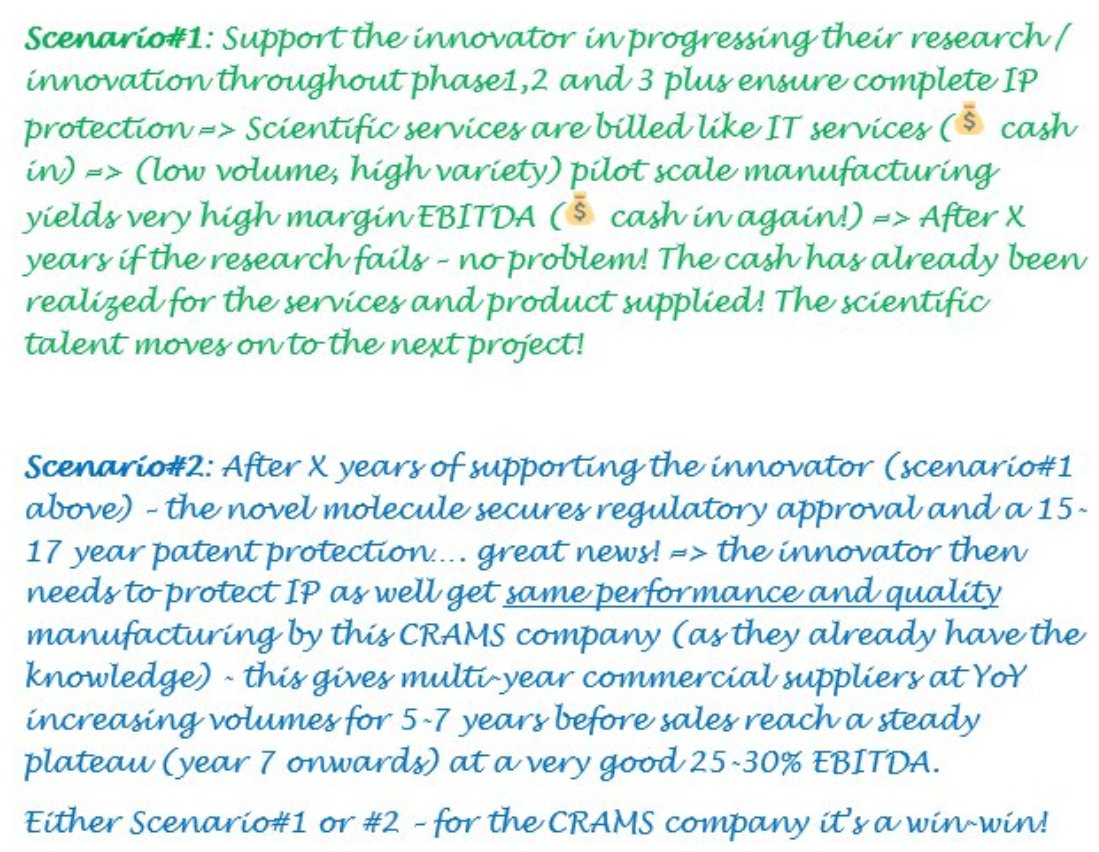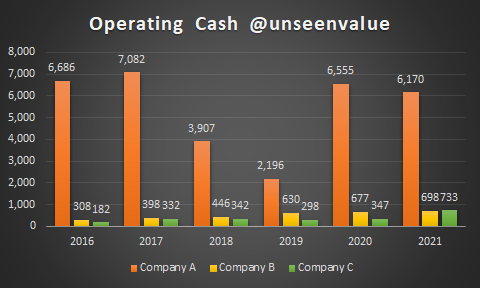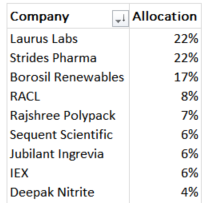Impact of Bioeconomy / Biotechnology be very visible by 2030. This runway is ridiculously long, so even those who buy after 10 years, will create serious wealth if they could hold for a long enough period.
Allocation + Patience = 💰💰💰💰
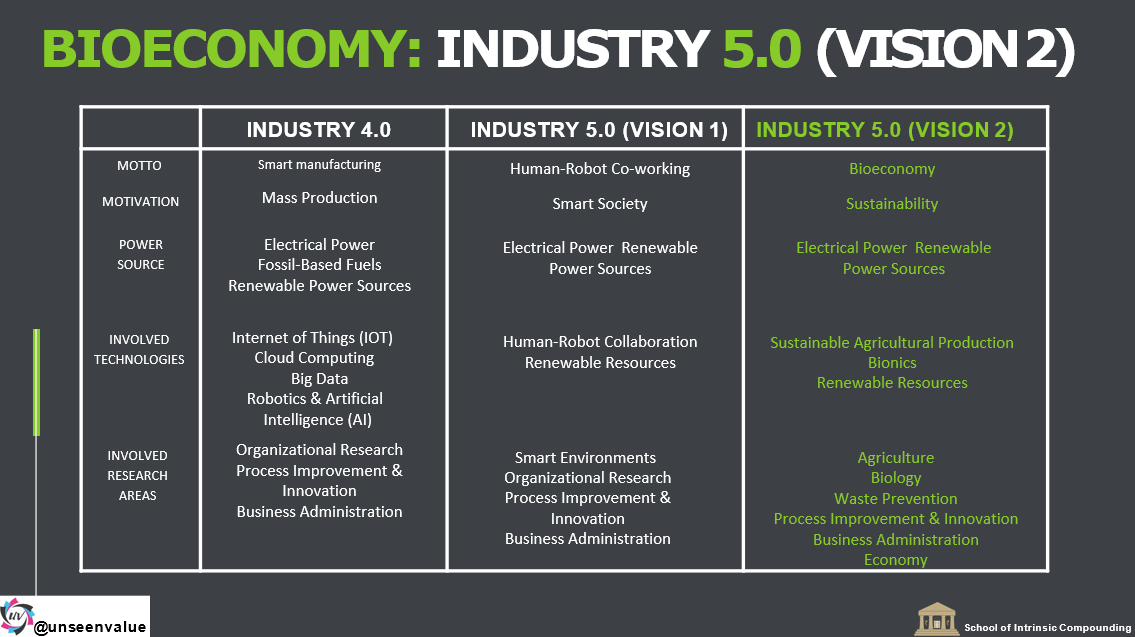
More from Sajal Kapoor
@oldschoolinvest I said 20-25% #CDMO (Synthesis) growth going forward in @IIC_Conference June 2020 conclave. They have delivered better than my expectations.
Never Knowingly Misguide.
Money making and fake advisory/PMS propaganda has never been my agenda
Never Knowingly Misguide.
Money making and fake advisory/PMS propaganda has never been my agenda
In just 15 years, #LaurusLabs has scaled up like no other..!
— Conviction | Patience (@unseenvalue) July 5, 2020
Numbers v Narrative: Well balanced 2800 Cr sales + huge competitive advantage in terms of IP/patents/synthesis capability!
Comparing Laurus with others - 1 hrs 28 mins\U0001f447https://t.co/Zzx6AwHZLH
Conviction | Patience pic.twitter.com/I6bImfjDCW
More from Uvlearnings
You offer me 80% cost arbitrage (discount relative to Japan/EU/US) along with low confidence / assurance on Critical Success Factors and I won't give you a single NCE/NBE to discover, develop or manufacture. Capex/opex arbitrage is too low in the disruptive-science-pecking-order! https://t.co/O2l8dK4BUv
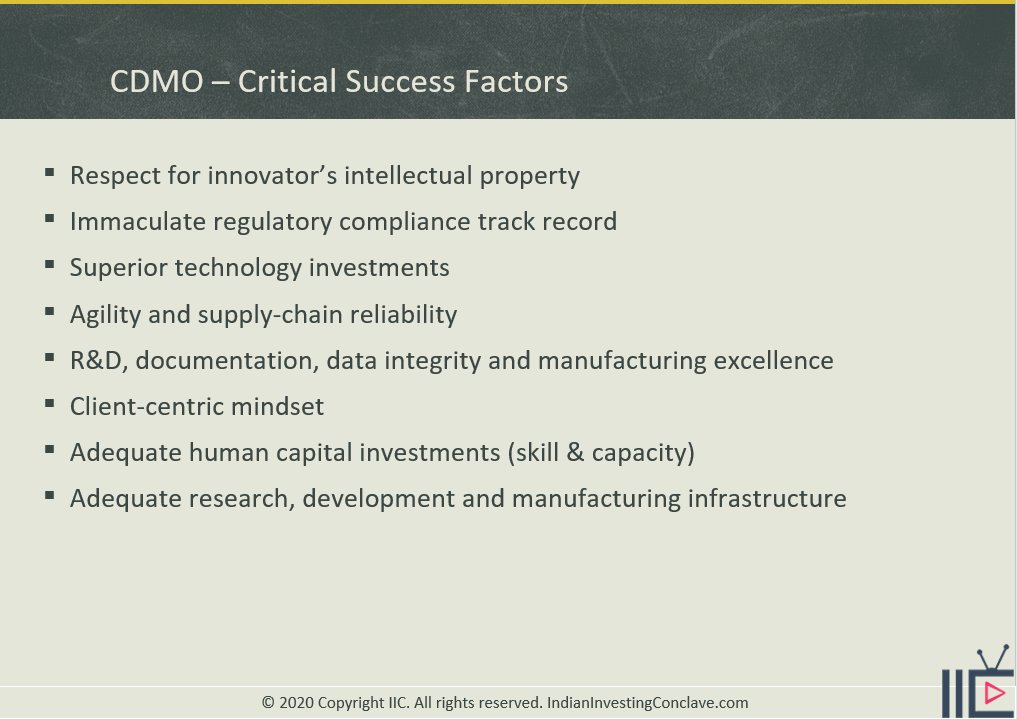

@unseenvalue Given high capex/opex cost structures of US/Japan/EU, how will they be able to compete with Indian API companies? https://t.co/OYhC2PUZpL
— Hiren (@hiren_investing) August 11, 2021
@shuchi_nahar @AnyBodyCanFly Created this thread in 2018, as saw this coming. Covid actually accelerated the trend … next disruption will be lead by biosciences. Unseen today be seen few years out
Technology is enabling new ways of credibly accessing medical knowledge via smart phones / tablets.
— Conviction | Patience (@unseenvalue) November 8, 2018
Android, iOS have > 5k health / fitness apps like @Medscape, pointing to a future where the Tech. drives a part of medical knowledge and therapeutic guidance instead of a Doctor!
You May Also Like
A brief analysis and comparison of the CSS for Twitter's PWA vs Twitter's legacy desktop website. The difference is dramatic and I'll touch on some reasons why.
Legacy site *downloads* ~630 KB CSS per theme and writing direction.
6,769 rules
9,252 selectors
16.7k declarations
3,370 unique declarations
44 media queries
36 unique colors
50 unique background colors
46 unique font sizes
39 unique z-indices
https://t.co/qyl4Bt1i5x

PWA *incrementally generates* ~30 KB CSS that handles all themes and writing directions.
735 rules
740 selectors
757 declarations
730 unique declarations
0 media queries
11 unique colors
32 unique background colors
15 unique font sizes
7 unique z-indices
https://t.co/w7oNG5KUkJ

The legacy site's CSS is what happens when hundreds of people directly write CSS over many years. Specificity wars, redundancy, a house of cards that can't be fixed. The result is extremely inefficient and error-prone styling that punishes users and developers.
The PWA's CSS is generated on-demand by a JS framework that manages styles and outputs "atomic CSS". The framework can enforce strict constraints and perform optimisations, which is why the CSS is so much smaller and safer. Style conflicts and unbounded CSS growth are avoided.
Legacy site *downloads* ~630 KB CSS per theme and writing direction.
6,769 rules
9,252 selectors
16.7k declarations
3,370 unique declarations
44 media queries
36 unique colors
50 unique background colors
46 unique font sizes
39 unique z-indices
https://t.co/qyl4Bt1i5x

PWA *incrementally generates* ~30 KB CSS that handles all themes and writing directions.
735 rules
740 selectors
757 declarations
730 unique declarations
0 media queries
11 unique colors
32 unique background colors
15 unique font sizes
7 unique z-indices
https://t.co/w7oNG5KUkJ

The legacy site's CSS is what happens when hundreds of people directly write CSS over many years. Specificity wars, redundancy, a house of cards that can't be fixed. The result is extremely inefficient and error-prone styling that punishes users and developers.
The PWA's CSS is generated on-demand by a JS framework that manages styles and outputs "atomic CSS". The framework can enforce strict constraints and perform optimisations, which is why the CSS is so much smaller and safer. Style conflicts and unbounded CSS growth are avoided.

